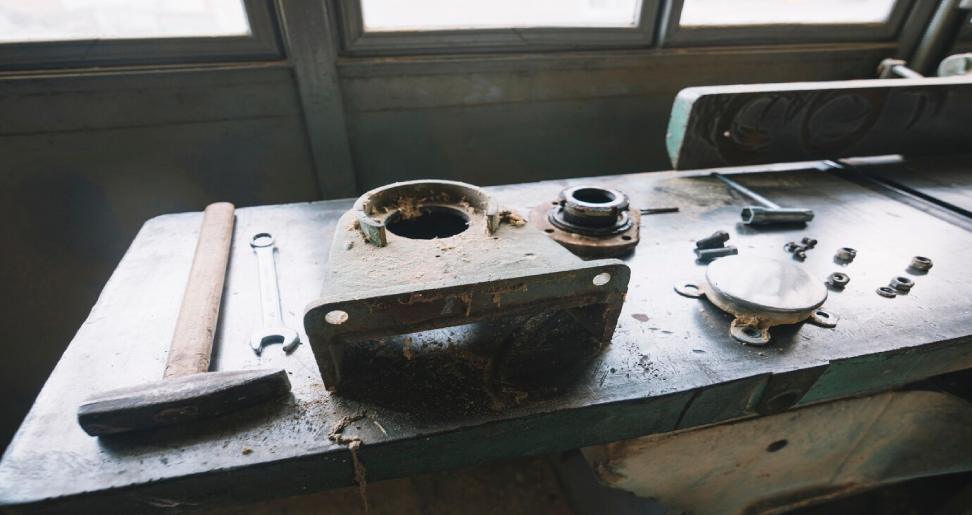High-pressure die casting (HPDC) is the dominant force within the die casting world. HPDC molds are the specialized tools used in this process, responsible for transforming molten metal into intricate and high-precision parts at high speeds.
HPDC Mold vs. Die Casting Mold:
Technically, die casting mold is considered HPDC mold, as the “high pressure” aspect refers to the core functionality of die casting. However, when discussing HPDC molds specifically, we’re often focusing on the context:
Focus on Aluminum and Alloys: HPDC is primarily used for metals with lower melting points, like aluminum, zinc, and magnesium. These metals are well-suited to the rapid injection process of HPDC.
Hot-Chamber Design: Nearly all HPDC molds utilize a hot-chamber design. Here, molten metal is held in a separate chamber within the die casting machine and then forced into the mold cavity by a plunger. This allows for faster cycle times compared to cold-chamber die casting.
Key Components of a HPDC Mold:
The core components of a HPDC mold are similar to a general die casting mold, but with some specific considerations for HPDC applications:
Die Cavity: The heart of the mold, plastic injection molding China creates a negative impression of the desired part. HPDC molds often require features like overflows (areas for excess metal) to accommodate the high-pressure injection.
Runner System: Critical for HPDC, the runner system must be meticulously designed to handle the fast flow of molten metal. It needs to minimize turbulence, prevent premature solidification, and ensure proper filling of the cavity.
Venting System: Entrapped air within the mold cavity can cause casting defects. Vents are strategically placed channels that allow air to escape during the injection process.
Cooling System: Rapid cooling is essential for HPDC to achieve dimensional stability and prevent defects. HPDC molds typically have a more elaborate cooling system compared to other die casting methods.
Ejection System: Similar to general die casting molds, the ejection system removes the solidified casting efficiently without damaging the mold or the part.
Materials for HPDC Molds:
Tool steel remains the primary material for HPDC molds due to its excellent combination of:
Strength: To withstand the high injection pressures.
Hardness: To resist wear and tear during repeated casting cycles.
Thermal Conductivity: To facilitate rapid heat transfer from the molten metal for faster cooling.
Here’s a breakdown of some commonly used tool steel grades for HPDC molds:
H-13 Steel: The most widely used due to its good balance of properties and affordability.
H-21 Steel: Offers superior hot strength and wear resistance for high-volume production runs.
Maraging Steel: Provides exceptional dimensional stability and high strength, ideal for complex parts and tight tolerances.
Design Considerations for HPDC Molds
Designing an HPDC mold requires careful consideration of several factors:
Part Geometry: HPDC excels at creating complex shapes with thin walls. However, achieving good metal flow and proper solidification can be challenging for intricate designs.
Gating System Design: Optimizing the runner system is crucial for HPDC. Factors like gate size, location, and angulation all play a role in achieving smooth metal flow and minimizing turbulence.
Cooling System Design: The placement and design of cooling channels significantly impacts the cooling rate and casting quality. HPDC molds often utilize advanced cooling techniques like conformal cooling channels that closely follow the part geometry.
Venting System Design: Venting plays a critical role in HPDC. Vents need to be strategically placed and sized to efficiently remove trapped air without compromising the integrity of the casting.
Advantages of HPDC Molds:
HPDC molds offer several advantages over other metal shaping methods, especially for aluminum and its alloys:
High Production Rates: The rapid injection process and efficient mold design enable the production of large quantities of parts in a short time.
Excellent Surface Finish: HPDC parts can achieve a smooth surface finish, often requiring minimal post-processing.
Dimensional Accuracy: HPDC molds produce parts with tight tolerances, reducing the need for additional machining.
Cost-effective for Mass Production: While the initial mold cost can be high, the high production rates and minimal post-processing make HPDC cost-effective for large volume applications.
Lightweight Parts: Aluminum and its alloys used in HPDC are lightweight, making them ideal for applications where weight reduction is crucial.
In conclusion
High-pressure die casting (HPDC) molds are the backbone of high-volume, precision metal production for parts made from aluminum and its alloys. These specialized tools utilize a hot-chamber design and high injection pressure to rapidly shape molten metal into intricate and near-net-shape components. While the upfront cost of an HPDC mold can be significant, the advantages in terms of production speed, part quality, and material efficiency make them a valuable asset for various industries, particularly automotive, aerospace, and consumer electronics. As design techniques and materials for HPDC molds continue to evolve, we can expect even more complex and high-performance metal parts to be produced through this powerful process.
Additional:

